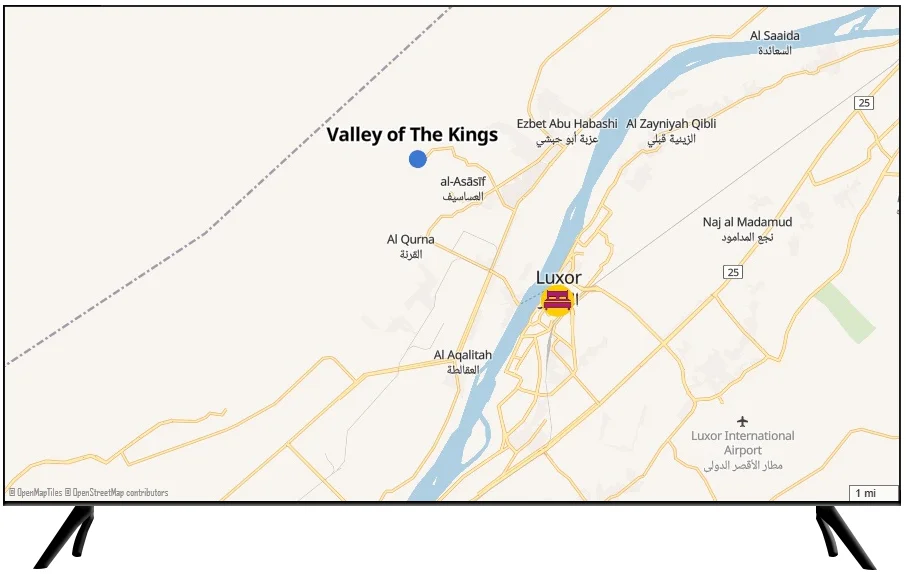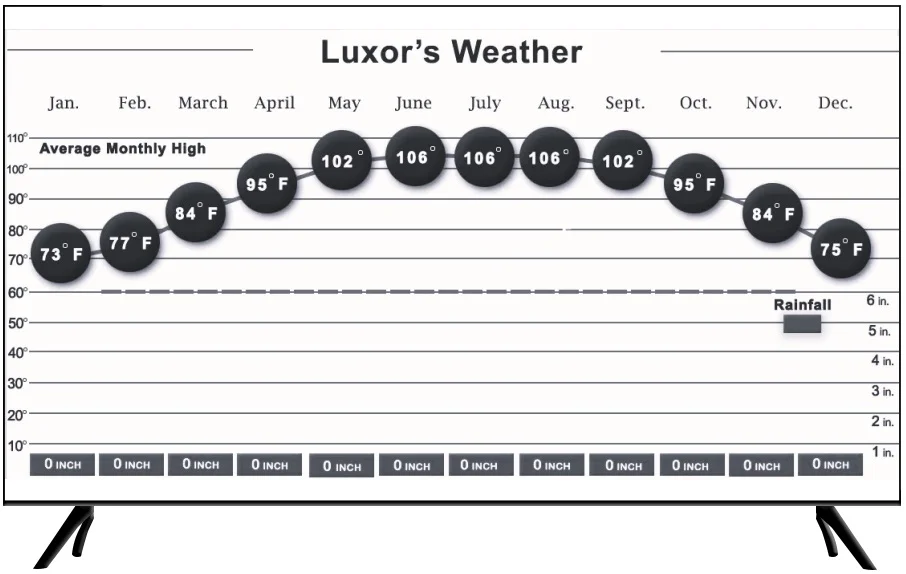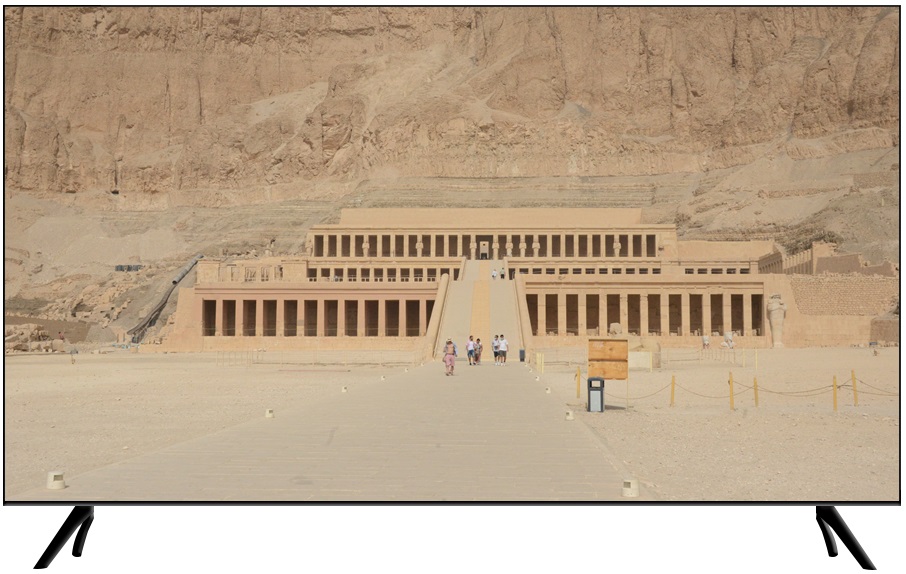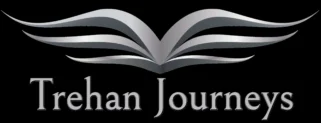


Day 5. Luxor
Overnight - Sofitel Winter Palace
Valley of the Kings, Hatshepsut Temple, Valley of the Queens and the Colossi of Memnon. You will meet your Egyptologist Tour Director in the lobby and accompany him to the hotel jetty, from where you will enjoy a 10-minute speedboat ride to the other bank of the enchanting Nile River. This is a significantly shorter journey than the drive option which requires driving a long way to get to the closest bridge over the Nile. We recommend you get a packed snack from your hotel for this day’s excursion, or have a fairly late lunch upon your return to your hotel.
Your vehicle will be waiting for you when you disembark your speedboat. You will explore the most impressive tombs in the barren and scenic valley, and not have long waits under the desert sun like other visitors. Capacity is controlled at all Tombs and the popular standard Tombs are nice but not as impressive and have long lines. The handpicked tombs we take you to require individual entrance tickets and have, at most, very short lines.
Camera Photography can often be restricted at one or more Tombs without any prior notice. Some of the Tombs, such as the magnificent Tomb of Nefertari in the Valley of the Queens, currently do not permit any photography except with cell phones, but the option to even use your phone’s camera is subject to change at any time. Please note that photography rules are strictly enforced.
Your exploration will include the following premium attractions:
1: The Tomb of Ramses V & VI (KV9) – This 340-foot-long Tomb was started by Ramses V but later taken over by his successor, Ramses VI. The paintings, bas-reliefs and hieroglyphs covering the walls and ceilings are among the best preserved in the Valley, making for an incredibly colorful Tomb.
2: The Tomb of Tutankhamun (King Tut) (KV62) – This is one of the smaller Tombs in the valley. The Tomb was discovered in 1922 with all its treasures intact, and the majority of these artifacts are now the most impressive section of displays in the Grand Egyptian Museum in Giza. You will be able to see young King Tut’s mummified remains in the Tomb, and the glittering shrines in his burial chamber.
3: The Tomb of Seti I (KV17) – This is the longest Tomb in the valley at over 450 feet, and also one of the deepest. There are incredible decorations on the walls and ceilings, and its vivid colors are a delight to behold. A steep entry fee eliminates the long lines found for most tombs, and those who do not visit Nefertari’s Tomb in the Valley of the Queens usually feel that this was the most impressive Tomb that they have seen.
4: The Tomb of Nefertari (QV66) Valley of the Queens – On the way to the Valley of the Queens you will stop along the way at the Temple of Hatshepsut, as detailed below. Located a short distance away in the Valley of the Queens, Nefertari’s Tomb is, in our opinion, the most striking Tomb in the Luxor region, and among the least visited due to its entry fee. The 5600 square foot Tomb has amazing multicolored artwork on its polished stone walls, and the incredible beauty of the legendary queen is depicted in scores of paintings. Ramses II immortalized his beloved queen repeatedly, as in the awe-inspiring Temples at Abu Simbel, and the Tomb certainly achieves what it was intended to do.
Mortuary Temple of Hatshepsut. Before reaching the Valley of the Queens and Nefertari’s Tomb, you will stop along the way at this wonderfully restored temple complex. This impressive 3500-year-old structure is built on 3 levels reaching almost 100 feet at the top. During your travels your Egyptologist Tour Director will share some fascinating tales about Queen Hatshepsut, one of the smartest rulers of this ancient world.
Colossi of Memnon. The last stop on this exploration will be at these two massive 14 Century BC statues of King Amenhotep III. These ancient structures reach about 60 feet high and are estimated to each weigh about 720 tons. Unlike most visitors, you will visit these at the end of your exploration on this day so that you can be among the first to arrive at the Valley of the Kings in the morning. In the early to mid-afternoon, depending on how much time you enjoy at the above attractions, you will return to your hotel for some relaxation and a meal, if you are so inclined.
Luxor Temple and Sunset Illumination: You can enjoy a very short walk on the scenic Nile Corniche (with pushy souvenir sellers) to the Luxor Temple, or you can choose to be driven. The best time to visit this magnificent 3400-year-old Temple Complex is in the late afternoon as this allows you to first explore its incredible attractions in daylight and then be mesmerized at sunset as the artfully placed spotlights illuminate the façade and the scores of ancient attractions the complex contains.
Avenue of Sphinxes Moonlight Walk: From the Temple you will experience a walk on the similarly lit Avenue of Sphinxes. This ancient royal pathway finished a massive reclamation and restoration project and opened to the public with much fanfare in November 2021. It is a unique experience to walk along the broad avenue in the dark, flanked by gently illuminated ancient sphinxes. The Avenue of Sphinxes was ‘The King’s Festivities Road’, and runs the full 1.7 miles between the awe-inspiring temples of Luxor and Karnak – you can choose to walk as far as you want before returning to your hotel.
Valley of the Kings, Hatshepsut Temple, Valley of the Queens and the Colossi of Memnon. You will meet your Egyptologist Tour Director in the lobby and accompany him to the hotel jetty, from where you will enjoy a 10-minute speedboat ride to the other bank of the enchanting Nile River. This is a significantly shorter journey than the drive option which requires driving a long way to get to the closest bridge over the Nile. We recommend you get a packed snack from your hotel for this day’s excursion, or have a fairly late lunch upon your return to your hotel.
Your vehicle will be waiting for you when you disembark your speedboat. You will explore the most impressive tombs in the barren and scenic valley, and not have long waits under the desert sun like other visitors. Capacity is controlled at all Tombs and the popular standard Tombs are nice but not as impressive and have long lines. The handpicked tombs we take you to require individual entrance tickets and have, at most, very short lines.
Camera Photography can often be restricted at one or more Tombs without any prior notice. Some of the Tombs, such as the magnificent Tomb of Nefertari in the Valley of the Queens, currently do not permit any photography except with cell phones, but the option to even use your phone’s camera is subject to change at any time. Please note that photography rules are strictly enforced.
Your exploration will include the following premium attractions:
1: The Tomb of Ramses V & VI (KV9) – This 340-foot-long Tomb was started by Ramses V but later taken over by his successor, Ramses VI. The paintings, bas-reliefs and hieroglyphs covering the walls and ceilings are among the best preserved in the Valley, making for an incredibly colorful Tomb.
2: The Tomb of Tutankhamun (King Tut) (KV62) – This is one of the smaller Tombs in the valley. The Tomb was discovered in 1922 with all its treasures intact, and the majority of these artifacts are now the most impressive section of displays in the Grand Egyptian Museum in Giza. You will be able to see young King Tut’s mummified remains in the Tomb, and the glittering shrines in his burial chamber.
3: The Tomb of Seti I (KV17) – This is the longest Tomb in the valley at over 450 feet, and also one of the deepest. There are incredible decorations on the walls and ceilings, and its vivid colors are a delight to behold. A steep entry fee eliminates the long lines found for most tombs, and those who do not visit Nefertari’s Tomb in the Valley of the Queens usually feel that this was the most impressive Tomb that they have seen.
4: The Tomb of Nefertari (QV66) Valley of the Queens – On the way to the Valley of the Queens you will stop along the way at the Temple of Hatshepsut, as detailed below. Located a short distance away in the Valley of the Queens, Nefertari’s Tomb is, in our opinion, the most striking Tomb in the Luxor region, and among the least visited due to its entry fee. The 5600 square foot Tomb has amazing multicolored artwork on its polished stone walls, and the incredible beauty of the legendary queen is depicted in scores of paintings. Ramses II immortalized his beloved queen repeatedly, as in the awe-inspiring Temples at Abu Simbel, and the Tomb certainly achieves what it was intended to do.
Mortuary Temple of Hatshepsut. Before reaching the Valley of the Queens and Nefertari’s Tomb, you will stop along the way at this wonderfully restored temple complex. This impressive 3500-year-old structure is built on 3 levels reaching almost 100 feet at the top. During your travels your Egyptologist Tour Director will share some fascinating tales about Queen Hatshepsut, one of the smartest rulers of this ancient world.
Colossi of Memnon. The last stop on this exploration will be at these two massive 14 Century BC statues of King Amenhotep III. These ancient structures reach about 60 feet high and are estimated to each weigh about 720 tons. Unlike most visitors, you will visit these at the end of your exploration on this day so that you can be among the first to arrive at the Valley of the Kings in the morning. In the early to mid-afternoon, depending on how much time you enjoy at the above attractions, you will return to your hotel for some relaxation and a meal, if you are so inclined.
Luxor Temple and Sunset Illumination: You can enjoy a very short walk on the scenic Nile Corniche (with pushy souvenir sellers) to the Luxor Temple, or you can choose to be driven. The best time to visit this magnificent 3400-year-old Temple Complex is in the late afternoon as this allows you to first explore its incredible attractions in daylight and then be mesmerized at sunset as the artfully placed spotlights illuminate the façade and the scores of ancient attractions the complex contains.
Avenue of Sphinxes Moonlight Walk: From the Temple you will experience a walk on the similarly lit Avenue of Sphinxes. This ancient royal pathway finished a massive reclamation and restoration project and opened to the public with much fanfare in November 2021. It is a unique experience to walk along the broad avenue in the dark, flanked by gently illuminated ancient sphinxes. The Avenue of Sphinxes was ‘The King’s Festivities Road’, and runs the full 1.7 miles between the awe-inspiring temples of Luxor and Karnak – you can choose to walk as far as you want before returning to your hotel.

